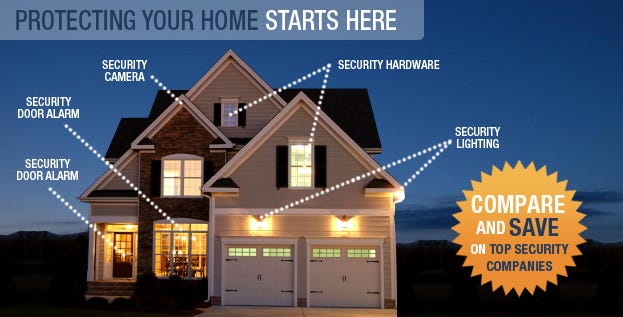Exploring the Duty of Accessibility Control Systems in Enhancing Protection Tools Effectiveness and Performance
Gain access to control systems are increasingly acknowledged as crucial elements in the landscape of safety monitoring, offering an organized strategy to control accessibility to sensitive areas and info. Their ability to incorporate with different protection technologies, such as monitoring electronic cameras and alarm, significantly enhances the overall efficiency and effectiveness of safety operations. As companies browse the complexities of execution and management, various challenges develop that warrant consideration. What effects do these difficulties hold for the future of safety protocols and technologies?
Understanding Accessibility Control Systems
Accessibility control systems play a critical function in ensuring the safety of various atmospheres, from company offices to sensitive federal government facilities. These systems regulate who can go into or leave a designated area, consequently securing possessions and sensitive information. The essential components of accessibility control systems consist of verification, permission, and recognition processes.
Recognition entails verifying an individual's identity, generally via qualifications such as key cards, biometric data, or passwords. When recognized, authentication validates the person's right to accessibility, usually with multi-factor verification approaches to improve safety and security. Consent identifies the level of gain access to approved, permitting for set apart authorizations based on duties within the company.
Gain access to control systems can be categorized right into two primary types: logical and physical. Physical gain access to control concern concrete places, while logical access control governs electronic details systems. Both types function synergistically to give extensive safety services.
Combination With Safety Technologies
The combination of accessibility control systems with other safety and security innovations is crucial for producing an alternative safety environment. By incorporating access control with video surveillance, invasion discovery, and alarm system systems, companies can improve their general security pose. This interconnected structure permits real-time surveillance and fast action to protection incidents, improving situational understanding and functional effectiveness.
For example, integrating gain access to control with video clip monitoring makes it possible for safety workers to validate access events visually, making certain that only licensed individuals are granted entrance. In a similar way, when accessibility control systems are linked to alarm, any type of unauthorized accessibility attempts can trigger immediate alerts, motivating quick action.
Furthermore, the combination of accessibility control with cybersecurity steps is progressively vital in securing physical properties and delicate information. By lining up physical security protocols with IT protection systems, companies can make certain that both physical and digital gain access to factors are checked and controlled successfully.
Advantages of Improved Safety Operations

Additionally, boosted security operations help with real-time monitoring and incident reaction. With incorporated systems that encompass monitoring cams, alarms, and gain access to controls, protection groups can promptly recognize and attend to potential hazards. This proactive method enables prompt treatments, minimizing the likelihood of safety breaches and possible losses.
Furthermore, effective security operations add to a culture of safety within the company. Staff members are likely to feel even more protected when they understand that robust procedures are in place, bring about boosted morale and productivity. In addition, making use of information analytics from accessibility control systems enables organizations to examine safety and security trends, improve policies, and assign resources effectively.
Considerations and obstacles

Additionally, organizations need to attend to the capacity for information violations. Gain access to control systems commonly manage sensitive details, and any kind of vulnerabilities can subject this information to unauthorized gain access to. customized security solutions. Making certain robust cybersecurity procedures is important to shield versus such dangers
User training is another essential factor to consider. Employees have to recognize just how to make use of accessibility control systems properly, as incorrect usage can lead to security gaps. Moreover, organizations need to balance safety and security with individual benefit; extremely restrictive access can prevent performance and result in workarounds that jeopardize security protocols.
Conformity with lawful and regulative demands is likewise paramount. Organizations should make certain that their accessibility control systems meet industry requirements and local laws, which can vary substantially. Lastly, the ongoing maintenance and administration of these systems call for specialized resources, making it vital for companies to assign ideal budget plans and workers to make sure lasting performance and performance.

Future Patterns in Accessibility Control
Preparing for the future of access control exposes a landscape progressively shaped by technological developments and advancing safety and security needs. One significant fad is the integration of synthetic knowledge (AI) and maker understanding, which improve decision-making abilities and automate risk discovery. These modern technologies enable real-time evaluation link of accessibility patterns, enabling more adaptive and receptive safety actions.
Biometric verification is additionally gaining traction, with improvements in finger print, facial recognition, and iris scanning technologies using boosted protection and individual convenience. As these systems come to be a lot more innovative and affordable, their fostering throughout different sectors is expected to increase.
Another arising pattern is the change towards cloud-based gain access to control systems. These options provide scalability, remote administration, and centralized information storage, allowing companies to boost and simplify procedures performance.
Moreover, the Net of Things (IoT) is established to change access control by allowing interconnected devices to interact and share information, thus enhancing situational awareness and protection responsiveness.
Conclusion
Finally, access control systems dramatically enhance the efficiency and effectiveness of protection tools by helping with accurate recognition, authentication, and consent processes (access control manufacturers). Their combination with security and alarm cultivates a proactive safety environment that deals with prospective breaches in real-time. While considerations and obstacles exist, the ongoing evolution of access control modern technologies promises to additional enhance security operations. Eventually, these systems are indispensable to guarding sensitive locations and information within organizations, making certain a durable safety and security framework.
Gain access to control systems are significantly acknowledged as necessary elements in the landscape of safety administration, giving a structured technique to control accessibility to delicate areas and info. Physical access control pertains to substantial places, while sensible useful link gain access to control governs digital information systems.The combination of accessibility control systems with other safety innovations is important for creating an all natural security environment. Accessibility control systems often manage delicate information, and any kind of susceptabilities can expose this data to unapproved accessibility. Organizations should stabilize safety and security with individual ease; excessively restrictive gain access to can impede productivity and lead to workarounds that jeopardize safety protocols.